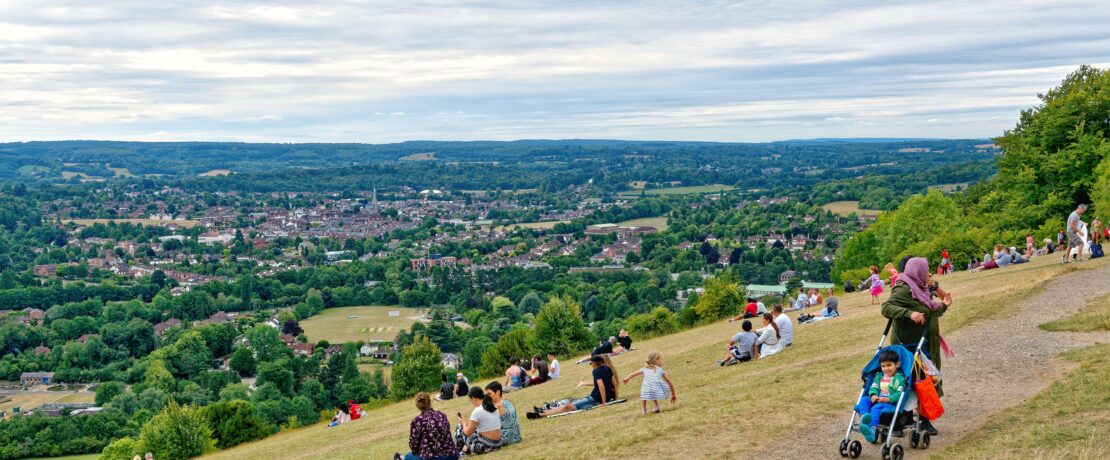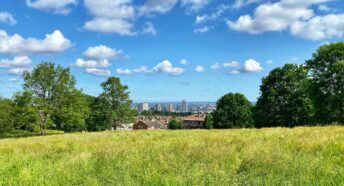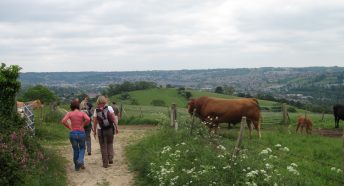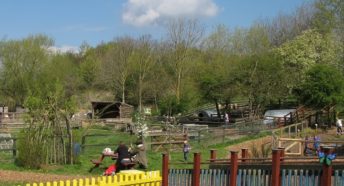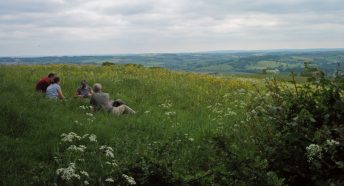Green Belt is crucial to solving climate, nature and food crises, we say
The Green Belt is being overlooked as a pivotal solution to climate change, the decline of nature and food security vulnerabilities, our new report shows.
The report argues that the Green Belt, which protects 12.6% of England’s land area from development, should become greener, wetter and more biodiverse.
Read ‘State of the Green Belt 2023’
Rewiggled streams, new wetlands, restored peatlands, expanded woodland and revived hedgerows could help the countryside around towns and cities soak up more water to protect urban areas from increased floods, droughts and other natural disasters. Food security could be strengthened by creating nature corridors that link rewilding projects with farmland and encourage people to buy local food. Tourism and recreation should be encouraged, with better footpaths, facilities and public transport links, so that people get the maximum benefit from green spaces.
‘State of the Green Belt 2023: A Vision for the 21st Century’ recommends:
- Doubling the amount of Green Belt farmland covered by Environmental Land Management schemes, from the current 28% to over half;
- Creating 350,000 hectares overall of new woodland and wetland close to urban areas, in-line with recommendations from the Natural Capital Committee;
- A Land Use Framework integrating planning, farming and forestry policies and programmes to protect and enhance the countryside close to where people live, particularly in and around our largest towns and cities.
The report highlights the need to improve transport links, recreation and tourism in the Green Belt. Its founding promise – access to green space, nature and cultural heritage for people in our largest towns and cities – needs fulfilling now more than ever.
A pivotal solution
Roger Mortlock, chief executive of CPRE said:
‘From the food we eat to the nature we need, the Green Belt is treasured today and envied by many other countries. But it has the potential to deliver so much more. It could yet become a pivotal solution to the climate, nature and food security challenges bearing down on us, not to mention the countryside next door for around 30 million people living in nearby towns and cities.
‘CPRE wants to see the Green Belt valued and protected for what it is but also delivering more in the future. Climate change promises more floods, more droughts and increased risk of wildfire. To protect the Green Belt is also to help protect the towns and cities it surrounds. Relatively small investments in rewiggling streams, creating ponds and wetlands, and planting trees and hedgerows could help the countryside manage water naturally and protect nearby towns from flooding.
‘To reverse the decline of nature, improve food security and provide the affordable homes local communities need, the answer is to be found in integrated planning, farming and forestry policies. We need all the main political parties to commit to keeping Green Belts for the long term. Current Green Belt policy already allows for building more genuinely affordable homes on brownfield sites or the edge of villages. But more needs to be done to deliver these homes, as currently most of the housing being built in the Green Belt is larger open market housing. We must be clear about the challenges ahead and put nature at the heart of the solution.’
Wrong homes in the wrong places
An acute need for more affordable and social housing means rural communities living within the Green Belt should be able to develop small rural exception sites on the edge of villages – even when it is on greenfield land – to accommodate local needs, the report recommends.
But it finds the wrong homes are being built in the wrong places for the wrong people. A sample of thirteen large schemes recently completed or currently being built on former Green Belt land found that only five percent of the housing built was social housing. Also, consistently less affordable housing overall was provided than was called for by local planning policy.
An analysis of the development of land either within the Green Belt, or removed through boundary changes since 2009 so that it could be developed, found that overall Green Belt policy continues to be effective, but also that significant amounts of development are taking place:
- Just under 208,000 houses in the local planning pipeline awaiting construction;
- An average of 220 planning applications for large developments of more than ten houses submitted, and at least 9,000 houses built, each year since 2009;
- Only 12.5% of houses were delivered at affordable or social rents;
- Brownfield land was marginally more likely to be developed than greenfield land – but in the last two years that trend has flipped, with the majority of land developed now greenfield.
Read our report
Our brand new report ‘State of the Green Belt 2023: A Vision for the 21st Century’ is now available to read; you can access it here.
Interactive Green Belt map
Want to find out where all the Green Belts are in England? Check out our interactive map.
